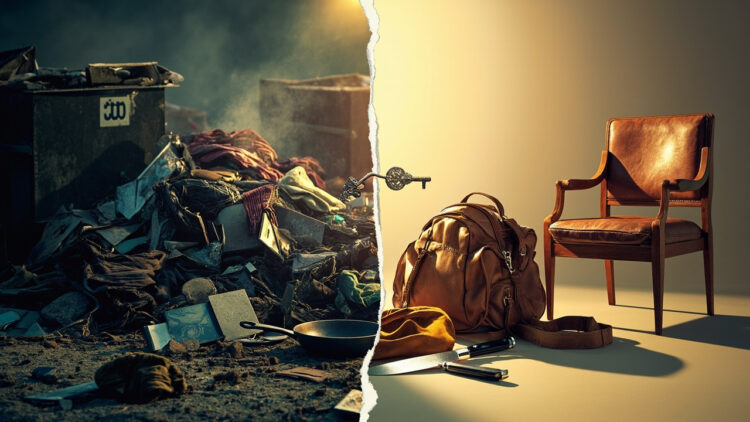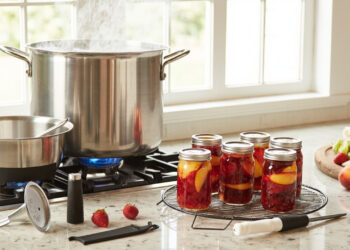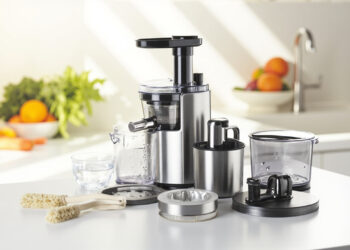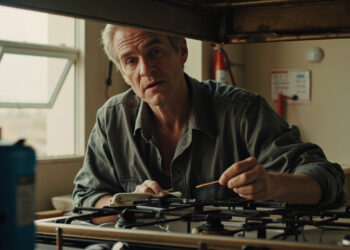Did you know that a $50 jacket replaced annually costs more than a $400 jacket that lasts 20 years? The initial price tag is a financial illusion that traps countless consumers in a cycle of disposable spending. This analysis reveals the undeniable math behind ‘cost per use’ and exposes how cheap purchases actually drain your wallet while quality investments pay for themselves. Understanding this fundamental economic principle transforms how you evaluate every purchase, from kitchenware to electronics, ensuring your money builds a lasting foundation rather than funding endless replacements.
The Real Cost of Cheap
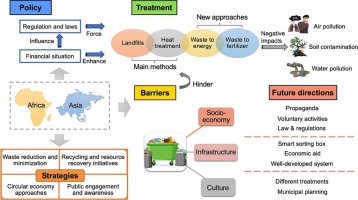
The Vicious Cycle of Disposable Goods
How “Savings” Actually Cost You More
It’s a trap we’ve all fallen for: the allure of the low price tag. But that initial “savings” is often a financial illusion. Let’s run the numbers.
| Product Category | The “Cheap” Cycle | The “Quality” Investment | 10-Year Cost (Approx.) |
|---|---|---|---|
| Fast Fashion vs. Heirloom Clothing | A $50 jacket that looks tired after one season, replaced annually. | A $400 well-made jacket that, with care, lasts 20 years. | Cheap: $500 |
| Electronics | A $200 bargain-bin laptop that becomes sluggish in 3 years. | A $1,200 professional-grade laptop built to last a decade. | Cheap: ~$800+ (and frustration) |
| Kitchenware | A $30 non-stick pan with a coating that flakes off within 2 years. | A $100 cast iron skillet that your grandchildren could cook with. | Cheap: $150+ |
The math is undeniable. The cheap option creates a repeating transaction, draining your wallet over time. The quality option is a one-time investment that pays for itself. This is the concept of “cost per use.” That $400 jacket, worn 100 times a year for 20 years, costs 20 cents per use. The $50 jacket, worn for one season, costs 50 cents per use—and you never get a timeless piece you love.
The Environmental Impact of Constant Replacement
The cost isn’t just to your bank account; it’s to the planet. Our habit of buying and tossing has severe consequences:
- Landfill Overload: The fast-fashion industry alone is responsible for 92 million tons of solid waste dumped in landfills each year. Disposable electronics and cheap home goods contribute significantly to this ever-growing pile.
- Carbon Footprint Multiplication: Every time you buy a replacement for a broken cheap item, you’re responsible for the carbon emissions from manufacturing a whole new product and shipping it—often across the globe. One quality item has one manufacturing and shipping footprint.
- Resource Drain: Continuous production cycles voraciously consume water, minerals, and raw materials. A cast iron pan made in 2025 might still be in use in 2075, saving countless resources that would have been used to produce 25+ disposable non-stick pans.
The Psychology of Cheap Purchases
Why We Keep Making the Same Mistake
If the long-term math is so clear, why is the “cheap” aisle always crowded? Our brains are wired with several biases that work against our better judgment.
- Immediate Gratification vs. Long-Term Planning: Our brains are heavily weighted toward the present. The immediate pleasure of saving $350 today feels more real and rewarding than the abstract concept of saving $100 over a decade. The pain of paying more upfront is acute, while the future pain of replacing the item is distant and vague.
- Budget Constraints and Perceived Affordability: For many, a large upfront cost simply isn’t feasible, making the cheaper option a necessity, not a choice. This is a real and valid economic pressure. However, sometimes it’s a matter of perception; we feel we can “afford” the $30 pan today, without calculating that we’ll be buying it again in two years.
- Lack of Consumer Education: We’re rarely taught about the Total Cost of Ownership (TCO). We look at the sticker price, not the cost-per-year or cost-per-use. We aren’t trained to ask, “How long will this truly last?” or “Is this repairable?” This lack of awareness keeps us on the hamster wheel of replacement.
This cycle is especially prevalent with items we use daily, where quality isn’t a luxury but a long-term strategy. For instance, equipping a kitchen with durable products transforms the daily chore of cooking. Brands that understand this, like Villeroy & Boch, design their tableware and accessories not as disposable seasonal items, but as enduring pieces meant to be part of your life for decades. It’s a shift from buying a plate to investing in a dining experience that stands the test of time. You can explore their collection of timeless, quality home products here: https://www.gopjn.com/t/8-12107-284702-178030.
What Makes Products Last

Materials That Stand the Test of Time
So, we’ve established that buying cheap is a bad financial and environmental deal. But what separates a fleeting purchase from a lifelong companion? It often comes down to the fundamental stuff it’s made from.
Metals and Alloys Built for Generations
Some materials aren’t just built to last; they’re built to get better. They don’t wear out—they wear in.
- Cast Iron Cookware: A company like Lodge has been making skillets the same way for over a century. With proper care (which isn’t as hard as you think), a cast iron pan doesn’t just last your lifetime; it becomes a non-stick, perfectly seasoned heirloom you can pass down. Its performance actually improves with use.
- Stainless Steel: Not all stainless is created equal. High-quality, multi-ply stainless steel, like that used in All-Clad cookware, distributes heat evenly and resists warping, corrosion, and scratching. Many of these brands offer lifetime warranties because they know the product will almost certainly outlive you.
- Brass and Copper: These metals develop a beautiful, protective patina over time. A brass doorknob or a copper mixing bowl doesn’t look “old”; it looks distinguished. High-end musical instruments are made from these materials precisely because their acoustic properties mature and improve with age.
Natural Materials That Age Gracefully
In a world of plastic and particleboard, natural materials offer a different kind of durability—one characterized by character and evolution.
- Full-Grain Leather: This is the top layer of the hide, complete with all its natural strength and imperfections. A belt from a company like Tanner Goods isn’t a disposable accessory; it’s a project. It starts stiff and bright, but over years, it molds to your body, darkens, and tells the story of your life through its scuffs and creases. It doesn’t degrade; it develops a unique personality.
- Solid Wood Furniture: Forget screws and staples that work themselves loose. Furniture like a Thuma bed frame uses time-tested Japanese joinery—interlocking wood pieces that create a structure that’s incredibly strong, stable, and silent. It can be disassembled and reassembled endlessly without degrading, making it a permanent fixture in your life.
- Merino Wool: In the world of socks, most are destined for the landfill after a season of pilling and losing elasticity. Then there are brands like Darn Tough. Using high-density knitting and superior merino wool, they make socks so durable they back them with an unconditional lifetime guarantee. If you ever wear a hole in them, they’ll replace them. They’ve made planned obsolescence obsolete.
Construction Quality Matters
Great materials are only half the story. How they’re put together is what turns components into a legacy.
Engineering for Longevity
This is where designers make conscious choices between a product that will fail and one that will endure.
- Mechanical vs. Quartz Movements in Watches: A cheap quartz watch is powered by a battery and a tiny electronic circuit. When it fails, you toss it. A mechanical watch, however, is a miniature machine of springs and gears. It can be serviced, cleaned, and repaired indefinitely. There are watches over a century old that still keep perfect time because of their repairable, mechanical nature.
- Stitched vs. Glued Construction in Footwear: Most fast-fashion shoes are simply glued together. Once that glue fails, the shoe is trash. Quality boots and shoes, from brands like Red Wing or Allen Edmonds, use Goodyear welting—a process where the sole is stitched to the upper. When the sole wears out (in many years), a cobbler can simply stitch on a new one, giving the shoes a second, third, or fourth life.
- Solid-State vs. Mechanical Components in Electronics: This is the modern frontier of durability. A laptop with a traditional hard drive (a mechanical spinning disk) is far more prone to failure from a bump or drop than a laptop with a solid-state drive (which has no moving parts). Investing in electronics built with robust, solid-state components is a direct investment in a longer, more reliable lifespan.
Repairability and Maintenance
The most sustainable product is the one you already own. Companies that facilitate repairs are building a different kind of relationship with their customers.
- Lifetime Repair Services: Brands like Barbour (for their waxed cotton jackets), Danner (for their boots), and Zippo (for their lighters) famously offer repair services. You can send them a decades-old product, and they will fix it up, often for a minimal fee. They are not just selling a product; they are stewards of it.
- Availability of Replacement Parts: A Dualit toaster is expensive. It’s also designed to be disassembled with a screwdriver. Every single part—from the heating elements to the iconic levers—is available for purchase. Instead of replacing a $200 toaster because a $15 part broke, you just replace the part.
- Modular Design: This is the gold standard. Systems like Vitsoe’s 606 shelving are designed not as a fixed piece of furniture, but as a kit of parts. You buy what you need now, and you can reconfigure, add to, or subtract from it as your life changes. It will never be obsolete because it adapts to you.
This philosophy of building things to last and be repaired extends throughout a home. It’s the same thinking behind the tableware from Villeroy & Boch, where pieces are crafted to withstand the rigors of daily use and dishwashers for years, all while maintaining their aesthetic appeal. It’s designed to be part of a lasting home, not a temporary trend. Explore their durable collections here: https://www.gopjn.com/t/8-12107-284702-178030.
Proven Buy-It-For-Life Categories

Let’s get specific. While the “buy cheap, buy often” cycle can infect any purchase, some categories have legendary products that are famous for outliving their owners. Investing here isn’t just about spending more; it’s about spending smarter, once.
Kitchen Investments That Pay Off
Your kitchen is a laboratory for product failure. Cheap tools break, dull knives are dangerous, and a bad oven can ruin dinner. But the right investments here pay dividends in every meal you cook for decades.
Cookware Worth Passing Down
This is where the “heirloom” concept becomes tangible. You’re not just buying a pan; you’re buying a future family artifact.
- Lodge Cast Iron Skillets: For around $30, you are buying a tool that, with basic care (cleaning and a little oil), will literally last for multiple generations. Its non-stick properties improve with use, and it’s virtually indestructible. It’s the ultimate antidote to flimsy, Teflon-coated pans that scratch and fail.
- All-Clad Stainless Steel: This is professional-grade cookware. Its multi-ply bonded construction (typically stainless steel wrapped around an aluminum core) ensures even heat distribution with no hot spots. It won’t warp, rust, or react with acidic foods. The company is so confident that they back it with a lifetime warranty, betting it will outlive you.
- Le Creuset Dutch Ovens: With a century-long track record, these enameled cast iron pots are workhorses. They go from stovetop to oven to table, retaining heat beautifully for slow-cooked meals and baking perfect bread. The enamel coating prevents rust and makes them easy to clean. They’re often passed down as the centerpiece of a family kitchen.
Appliances That Refuse to Die
While most modern appliances are designed with a 7-year lifespan, a few legendary brands stubbornly refuse to play along.
- KitchenAid Stand Mixers: The iconic design hasn’t changed much in decades for a reason: it works. Built with a powerful motor and a durable gear system, these mixers are known for lasting 30, 40, even 50 years. The best part? They are highly repairable. If a gear wears out or the motor fails, you can easily find parts and service to keep it running for another generation.
- Zojirushi Rice Cookers: While a $30 rice cooker might last a year or two, a Zojirushi is an investment in perfect rice for the next 20+ years. They use advanced fuzzy logic technology and superior construction to consistently produce perfect results. With simple maintenance like replacing the inner lid, they just keep going.
- Moccamaster Coffee Makers: In a world of complicated, plastic coffee machines that fail right after the warranty expires, Moccamaster offers elegant simplicity. Since 1968, they’ve used a fully repairable, thermally-blocked glass brew system with no planned obsolescence. If any part breaks—from the carafe to the heating element—you can order a replacement and fix it yourself. It’s designed to brew 1,800 cups a year for 10+ years.
Home Goods That Outlast Trends
Furniture and tools are the backbone of your daily life. Choosing quality here means building a stable, reliable environment, not constantly reassembling flimsy flat-pack items.
Furniture Built for Generations
Good furniture isn’t just about style; it’s about structure. It should be silent, stable, and supportive for decades.
- Herman Miller Office Chairs (Aeron, Embody): These aren’t just chairs; they are ergonomic machines designed for 24/7 use in corporate environments. With a 12-year warranty that’s incredibly comprehensive, they are built to last well over 30 years. Their polymer and aluminum frames don’t degrade, and every component—from the mesh to the casters—is replaceable.
- Room & Board Sofas: While many sofa companies hide behind short warranties, Room & Board offers a lifetime guarantee on all frames and spring systems. They use hardwoods and high-quality, durable springs that won’t sag or break. You’re paying for a structure that will never fail, allowing you to simply reupholster the exterior when styles change.
- Thuma Bed Frames: As highlighted previously, Thuma uses ancient Japanese joinery techniques to create a bed frame that is incredibly strong, stable, and completely silent. Its tool-free assembly means it can be disassembled and moved countless times without the joints degrading, making it a permanent solution for your bedroom.
Tools That Become Heirlooms
A quality tool feels right in your hand and does its job perfectly, year after year. It’s an extension of your capability, not a point of failure.
- Leatherman Multi-tools: These are the gold standard for a reason. Built from high-grade stainless steel, they are tough enough for professionals and adventurers. The company stands behind them with a 25-year warranty, and they have a legendary reputation for honoring it. It’s a one-time purchase for a lifetime of preparedness.
- Hults Bruk Hatchets: Using Swedish forging techniques that date back centuries, these hatchets are not just tools; they are pieces of functional art. The head is hand-forged and hardened to hold a razor-sharp edge, while the hickory handle is fitted to last. With proper care, it’s a tool your grandchildren will use.
- PB Swiss Tools: For screwdrivers, hex keys, and other precision tools, PB Swiss is in a league of its own. They use proprietary spring steel alloys that resist wear, rounding, and corrosion. The tolerances are perfect, and the durability is legendary among mechanics and craftspeople, maintaining their precision for decades of hard use.
This philosophy of investing in enduring quality applies to every corner of your home, right down to the tableware you use daily. The same principles of superior materials and robust construction are embodied by Villeroy & Boch. Their dinnerware is crafted from high-density materials to resist chipping and scratching, engineered to withstand the daily use of a dishwasher for years while retaining its beauty. It’s designed not for a season, but for a lifetime of gatherings. You can explore their collections designed for enduring daily use here: https://www.gopjn.com/t/8-12107-284702-178030.
Smart Shopping Strategies

Knowing what to buy is half the battle; the other half is knowing how to spot it. In a marketplace flooded with marketing buzzwords and designed-in fragility, you need a detective’s toolkit to separate the genuine long-term investments from the cleverly disguised junk.
How to Identify Quality Construction
This isn’t about having a magic eye; it’s about knowing where to look for the hard evidence of durability.
Research and Verification Methods
Before you click “buy,” do this quick digital triage. It takes 15 minutes and can save you hundreds.
- Checking Warranty Terms: A warranty is a company’s financial bet on its own product’s lifespan. A 90-day or 1-year warranty is a massive red flag—it screams “we expect this to fail just after you can’t return it.” Seek out “Limited Lifetime,” 10-year, or even 25-year warranties. More importantly, check the company’s repair policy. Do they offer schematics and sell individual parts? Brands like Moccamaster and Leatherman do, and that’s a hallmark of a true BIFL company.
- Reading Long-Term User Reviews: Skip the 5-star “just unboxed, looks great!” reviews. Go directly to the 3-star and 1-star reviews and filter for “most recent.” Look for patterns. Are people reporting the exact same mechanical failure after 18 months? Then, head to dedicated forums like Reddit’s r/BuyItForLife or brand-specific communities. The enthusiasts and repair technicians there provide unvarnished truth about what lasts and what doesn’t.
- Understanding Material Specifications: Look past words like “premium” or “commercial-grade.” Get specific. What kind of steel? (304 stainless is superior to “stainless steel.”) What type of wood? (Solid hardwood beats engineered wood or plastic.) Where is it manufactured? While not a perfect rule, products from certain regions (e.g., Germany, Japan, the USA) often have a reputation for quality control rooted in their manufacturing heritage.
Spotting Red Flags in Product Marketing
Companies that build disposable products are masters of misdirection. Learn their tricks.
- Planned Obsolescence Indicators: Be wary of products that are sealed shut with proprietary screws, making user repair impossible. Other signs include non-replaceable batteries in high-drain devices, and software that intentionally slows down older models.
- Non-Replaceable Components: If one small part fails, does the entire product become trash? A great example is a sofa with non-removable cushions or a tool with a handle that is permanently molded to the core. Quality products are designed with modular, replaceable parts.
- Lack of Service Documentation: A company that stands behind its product for decades will have a library of documentation available. If you can’t find a user manual, a parts list, or a “contact service” page on their website, they are not planning on supporting you—or the product—for the long haul.
Budgeting for Lifetime Purchases
The sticker shock of a quality item is real. The trick is to reframe the purchase from a simple cost to an investment.
The “Cost Per Use” Calculation Method
This is the most powerful math for justifying a quality purchase.
- The Formula: Total Item Cost ÷ Estimated Uses Over Lifetime = Cost Per Use.
- Comparative Analysis: Let’s take a toaster. A $30 toaster that dies in two years (730 uses) has a cost per use of about 4 cents. A $150 Toaster from a brand like Dualit, which lasts 20+ years (7,300 uses), has a cost per use of 2 cents. The “cheap” option is actually twice as expensive per slice of toast. Now factor in the hassle and environmental waste of replacing the cheap one nine times.
- Factoring in Maintenance: A $500 pair of Goodyear-welted boots can be resoled for $150 every few years, effectively making them immortal. The cost per use over 30 years is negligible. Compare that to buying a new $100 pair of glued-sole boots every year, which can never be repaired.
Phased Investment Approach
You don’t need to overhaul your entire life in one day. Be strategic.
- Prioritize by Frequency: Start with the items you use every single day. Your office chair, your chef’s knife, your coffee maker. The ROI on these items is immense because they impact your daily quality of life and get the most use.
- Build a Foundation Over Time: Think of it as curating a collection of quality, not a one-time shopping spree. One year, you invest in a great sofa. The next, you save for that stand mixer. This spreads out the financial impact and makes the goal achievable.
- Leverage Secondary Markets: For many legendary products, the secondary market is a treasure trove. A 20-year-old KitchenAid mixer is often just as good as a new one and can be found for a fraction of the price. The same goes for vintage cast iron, high-end tools, and solid wood furniture. The item has already proven it can last.
This strategic approach to consumption transforms shopping from a repetitive chore into a thoughtful process of building a permanent, reliable foundation for your life. It ensures that the objects you interact with daily, from the tools in your hands to the plates on your table, are a source of satisfaction, not frustration. For items like dinnerware, this means choosing brands that are engineered for this exact philosophy, such as Villeroy & Boch, whose pieces are designed to remain a beautiful and functional part of your home through years of daily use. See their durable collections here: https://www.gopjn.com/t/8-12107-284702-178030.
Maintenance and Care

You’ve done the hard work: you’ve researched, budgeted, and invested in products built to last a lifetime. But here’s the secret the marketing materials don’t always tell you: longevity isn’t just a feature you buy; it’s a state you actively maintain. A cast iron skillet can last 100 years, but only if you don’t let it rust. A leather jacket can be passed to your grandchildren, but only if it’s nourished. Quality items are partners, not servants; they require a little care in exchange for a lifetime of service.
Preserving Your Investments
Think of maintenance not as a chore, but as a low-cost insurance policy for your most valued possessions. A few minutes of care can add decades to an item’s life.
Routine Maintenance Protocols
This is the foundational, at-home care that prevents the majority of premature failures.
- Cast iron seasoning and care: A well-seasoned cast iron pan is naturally non-stick and rust-proof. After use, clean it with hot water and a stiff brush (no soap!). Dry it immediately and thoroughly on a warm stovetop burner. Then, wipe a tiny, tiny amount of oil inside and let it heat for a minute. This simple 5-minute ritual, repeated, builds a polymerized layer that is the soul of the pan.
- Leather conditioning schedules: Leather is skin, and it dries out and cracks without moisture. For items like boots, belts, and bags, condition them with a quality product (like Bick 4 or Lexol) every 6-12 months, or whenever the leather looks dry. Over-conditioning can be as bad as under-conditioning, so follow the product’s instructions.
- Wood furniture polishing and protection: Dust wood regularly with a soft, dry cloth. Use a quality furniture polish or wax 2-4 times a year to replenish oils and protect the finish. The single most important rule? Use coasters. Preventing water rings and heat damage is 90% of the battle.
Professional Services Worth Utilizing
Some tasks require a specialist’s touch. For your highest-tier items, these services are a bargain.
- Barbour jacket rewaxing services: The iconic waxed cotton Barbour jacket isn’t waterproof forever. The wax wears off. Barbour offers a mail-in rewaxing service that restores the jacket’s weatherproofing and repairs any minor damage like torn pockets or loose threads. It costs a fraction of a new jacket and essentially makes it new again.
- Danner boot recrafting program: When the soles of your $300 Danner boots wear out, you don’t throw them away. You send them to Danner. For a fixed fee, they will completely rebuild the boot: new soles, new footbeds, new laces, and a full clean and inspection. A recrafted Danner boot is often better than a new one, as the upper leather is already perfectly broken in.
- Mechanical watch servicing intervals: A fine mechanical watch is a tiny, intricate machine. Like a car, it needs periodic oiling and adjustment. The general rule is a full service every 5-10 years by a certified watchmaker. It’s not cheap, but it ensures the watch your grandfather wore will keep perfect time for your grandson.
Repair Instead of Replace
The most sustainable and economical thing you can do with a broken quality item is to fix it. This mindset shift is the final pillar of the “Buy It For Life” philosophy.
DIY Repair Opportunities
You don’t need to be a master craftsman to perform basic life-support. A few simple skills can save a dozen items from the landfill.
- Basic sewing and leather repair: Learning to sew a button, patch a hole, or re-stitch a torn seam is a superpower. For leather, a simple needle, heavy-duty thread, and some leather conditioner can repair a torn bag strap or a watch band.
- Simple electronics maintenance: Often, electronics “die” because of one failed component, like a blown capacitor, or because they’re clogged with dust. Learning to safely discharge a capacitor and use a soldering iron (with the help of online tutorials) can resurrect stereos, microwaves, and more. Regularly cleaning dust out of computer fans and vents prevents overheating, the silent killer of electronics.
- Woodworking and refinishing projects: A wobbly chair or table is often just a loose joint. A bottle of wood glue and some clamps can make it stronger than new. Scratched wood furniture can be touched up with a stain marker, and a full refinishing job can make a thrift store find look like a family heirloom.
Utilizing Manufacturer Services
The best companies don’t just sell you a product; they stand behind it with a service ecosystem designed to keep it out of a landfill.
- Patagonia repair program and DIY kits: Patagonia is the gold standard. They operate the largest garment repair facility in North America. You can mail in your torn jacket or worn-out shorts for an affordable repair. Even better, they sell DIY repair kits for common issues like patching holes or re-waterproofing, empowering you to do it yourself.
- GoRuck SCARS lifetime warranty: GoRuck makes indestructible bags and backs them with an unbeatable guarantee: “Any ruck, Any reason, Any time.” If your bag breaks, they fix it for free. If it’s un-fixable, they replace it. This warranty is so legendary it actually increases the resale value of their bags.
- Filson warranty and repair department: Filson’s tagline is “Might as well have the best.” Their warranty guarantees it for life. Their repair department will rebuild a battered 20-year-old briefcase with new leather, new zippers, and new fabric, effectively making it a hybrid of vintage character and new-part reliability.
This commitment to care and repair completes the cycle of responsible ownership. It transforms your possessions from disposable commodities into lasting companions with their own history and character. This philosophy extends to every corner of your home, including the dinnerware you use daily. Choosing brands that design for this very purpose, like Villeroy & Boch, ensures your table settings are not just for a season, but for generations. Explore their timeless and resilient collections here: https://www.gopjn.com/t/8-12107-284702-178030.
The Sustainable Advantage
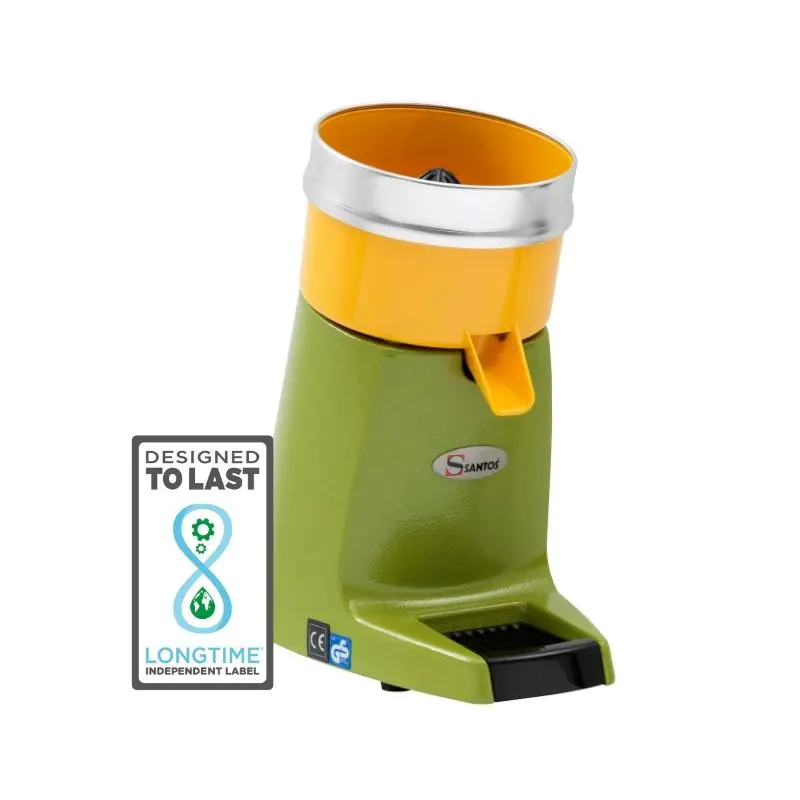
You’ve mastered the art of maintenance and embraced the power of repair. But the benefits of choosing quality extend far beyond your own home and wallet. This philosophy is the antidote to a throwaway culture, offering a profound and practical advantage for the world we live in.
Environmental Benefits of Quality
Every time you choose to repair a boot instead of trashing it, or reseason a pan instead of replacing it, you’re casting a vote for a more sustainable system. The environmental math of “Buy It For Life” is simple and powerful.
Reducing Waste Through Durability
The most direct environmental impact is the sheer reduction of stuff we throw away.
- Landfill diversion statistics for long-lasting products: The U.S. Environmental Protection Agency estimates that in 2025, the total generation of municipal solid waste (MSW) will continue to be a massive challenge. A single item built to last for decades directly prevents dozens of its cheaper counterparts from entering the waste stream. For example, a single cast iron pan that lasts a lifetime eliminates the need for 20-30 non-stick pans, each of which is a complex, difficult-to-recycle amalgam of metals, chemicals, and plastics.
- Carbon footprint reduction from fewer manufacturing cycles: The carbon cost of an item isn’t just in its use; it’s overwhelmingly in its production and transportation. Manufacturing a single stainless steel water bottle has a significant carbon footprint. But when that one bottle replaces 365 disposable plastic bottles per year, the carbon savings from avoided manufacturing and shipping become astronomical over the bottle’s lifetime.
- Resource conservation through extended product lifespans: Every product requires raw materials, water, and energy. A pair of jeans that lasts ten years instead of one consumes a fraction of the water, cotton, and dye over the same period. By extending an item’s life, you are actively conserving the planet’s finite resources with every use.
Supporting Ethical Manufacturing
When you invest in quality, you’re often funding a fundamentally different kind of business.
- Companies with transparent supply chains: Brands that build durable goods are typically more willing—and proud—to show you where and how their products are made. They aren’t hiding sweatshops; they’re showcasing skilled labor in factories they’re happy to put on a billboard.
- Brands investing in worker training and fair wages: Crafting a product that lasts requires trained, experienced, and cared-for workers. A company paying fair wages and providing stable employment has a vested interest in its artisans, leading to better quality control and a lower turnover rate. You are not just buying a product; you are supporting a craft.
- Manufacturers using sustainable materials and processes: Long-lasting goods often go hand-in-hand with sustainable sourcing. This includes using full-grain leather (a byproduct of the meat industry) instead of plastic-coated split leather, solid wood from responsibly managed forests instead of particleboard, and durable metals instead of cheap, flimsy plastics.
The Satisfaction of Ownership
Beyond the spreadsheets and environmental metrics lies a deeper, more human reward. Owning things you truly love and care for changes your relationship with the material world.
Emotional Value Beyond Financial
The true value of a well-made object isn’t its price tag.
- Connection to well-made objects: There is a palpable, daily joy in using a tool that feels solid in your hand, a bag whose straps are perfectly broken in, or a piece of furniture whose wood grain you’ve come to know. These items cease to be mere “stuff” and become trusted partners in your daily life.
- Pride in maintenance and care: That feeling of satisfaction after oiling a leather belt or sharpening a quality kitchen knife is real. It’s the pride of stewardship. You are not just a consumer; you are a curator and a caretaker, actively participating in the life of the object.
- Storytelling through inherited items: The scratch on the dining table isn’t a flaw; it’s the story of your child’s third birthday. The patina on a silver bracelet is the history of every time it was worn. Quality items become the physical anchors for our memories and stories, making them irreplaceable in the truest sense of the word.
Building a Legacy of Quality
This approach is about more than the present; it’s about building a foundation for the future.
- Products worth passing to future generations: You start to see your possessions not as disposable, but as potential heirlooms. The thought, “Will my granddaughter want this?” becomes a powerful filter for new purchases. It shifts your perspective from short-term gratification to long-term value.
- Developing personal standards for acquisitions: Once you’ve experienced the quiet reliability of a quality item, you can’t “un-feel” it. You become sensitized to the flimsiness of poorly made alternatives. This raises your personal bar, making you a more discerning and ultimately more efficient consumer.
- Creating a home environment of intentional ownership: Your home becomes a collection of items you have consciously chosen for their utility, beauty, and longevity. It is the opposite of a cluttered, chaotic space filled with the ghosts of impulse buys. It is a calm, curated environment that reflects a philosophy of “enough”—where everything you own is useful, loved, and built to last. This philosophy naturally extends to the items you use every day, from the tools in your workshop to the plates on your table. Opting for dinnerware designed to withstand the test of time, both in style and substance, like that from Villeroy & Boch, turns every meal into a small celebration of enduring quality. Discover pieces meant to become part of your family’s story here: https://www.gopjn.com/t/8-12107-284702-178030.
Getting Started Today

You’re convinced. The environmental and personal benefits of buying quality are clear. But staring at a house full of stuff and a budget that feels anything but infinite, the question remains: where on earth do you begin? The good news is that you don’t need to replace everything at once. This is a marathon, not a sprint. Let’s break down a practical, non-overwhelming plan.
First Steps Toward Quality Living
The most effective strategy is to focus your initial efforts and budget on the items you interact with every single day. The return on investment—in terms of daily joy, reduced frustration, and long-term savings—is highest here.
Immediate Upgrades with Biggest Impact
Think of this as your starter kit for a quality-driven life. Upgrading these items will deliver an immediate and noticeable improvement to your daily routine.
| Category | Quality Example & Key Feature | Why It’s a High-Impact Upgrade |
|---|---|---|
| Kitchen Knives | A single Shun Classic Chef’s Knife (or similar from a reputable brand) paired with a basic sharpening rod. | You use a chef’s knife for 90% of kitchen tasks. A sharp, well-balanced knife makes cooking faster, safer, and more enjoyable. It’s the workhorse of your kitchen. |
| Footwear | Danner hiking boots with recrafting services or Birkenstock sandals with replaceable footbeds. | Your feet are your foundation. Quality footwear provides proper support and can be repaired for decades, making cost-per-wear negligible. |
| Tools | A basic 20-piece toolkit from a brand like Klein Tools (for electrical/mechanical) or Estwing (for hammers). | When you need a screwdriver or wrench, you need one that won’t strip a screw or round a bolt. A few quality tools prevent DIY disasters and last a lifetime. |
Building Your Buy-It-For-Life Foundation
Once you’ve experienced the “aha!” moment with a key upgrade, you can build a sustainable, long-term strategy.
- Creating a priority list based on usage frequency: Grab a notepad. Walk through your day. What do you use most? Your office chair? Your wallet? Your coffee mug? Your winter coat? Rank potential upgrades based on how often you interact with the item. The daily drivers go to the top of the list.
- Researching brands with proven track records: Before any purchase, invest time in research. Websites and forums dedicated to the “Buy It For Life” philosophy are goldmines of information. Look for brands that have been in business for decades, offer strong warranties, and have a reputation for selling replacement parts.
- Setting aside funds for quality purchases: This is the practical core of the philosophy. Instead of spending $50 on a pair of boots that will disintegrate in a year, start a “Quality Purchase” fund. Put that $50, and the next $50, into a savings envelope or a dedicated account. In six months, you’ll have the $300 to buy the boots that will last for 20 years.
The Path to Intelligent Ownership
The evidence is overwhelming: cheap products create a vicious cycle of financial waste and environmental harm, while quality investments deliver long-term value and sustainability. By mastering the ‘cost per use’ calculation, prioritizing durable materials like cast iron and full-grain leather, and understanding construction techniques that enable repair, you transform from a passive consumer into an intelligent owner. The strategic approach of phased investment—starting with daily-use items—makes building a quality foundation achievable without financial strain. This mindset shift not only saves money but cultivates deeper satisfaction through stewardship of possessions that tell your story.
Ready to escape the disposable cycle and build a home filled with items designed to last? Begin your journey toward intelligent ownership today. Click here to explore enduring home products that embody these principles and start transforming your relationship with the things you own. Share your own ‘buy it for life’ discoveries in the comments below!

